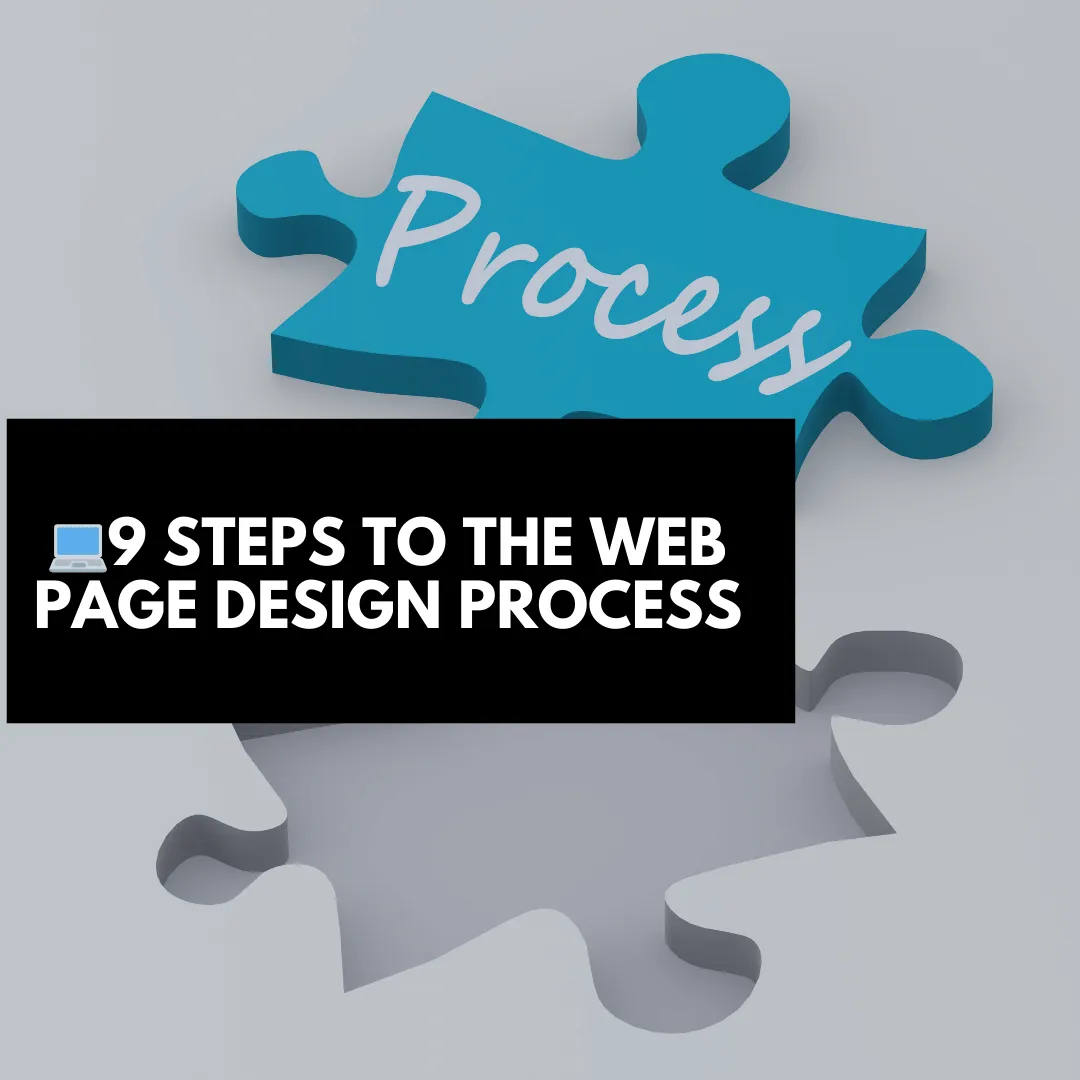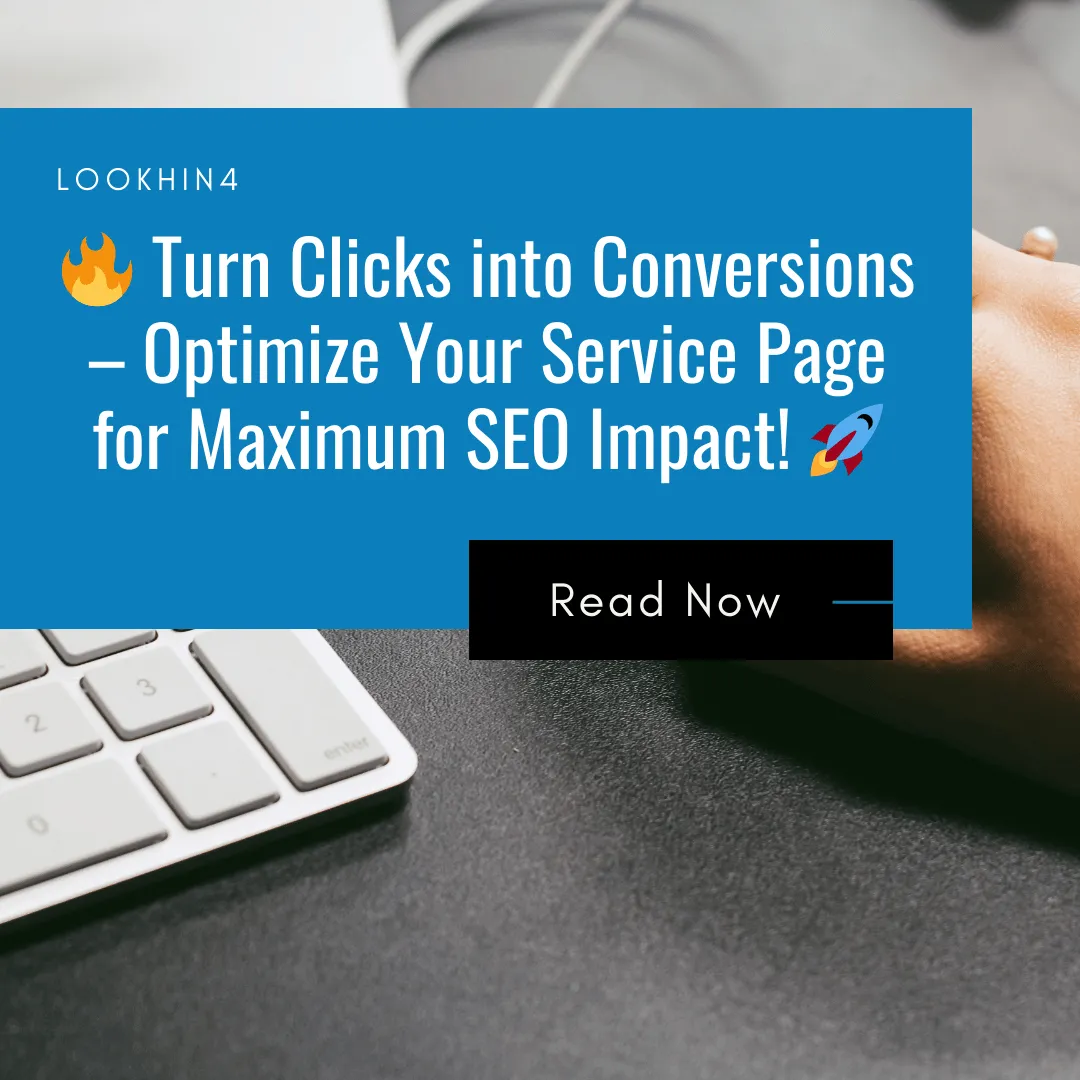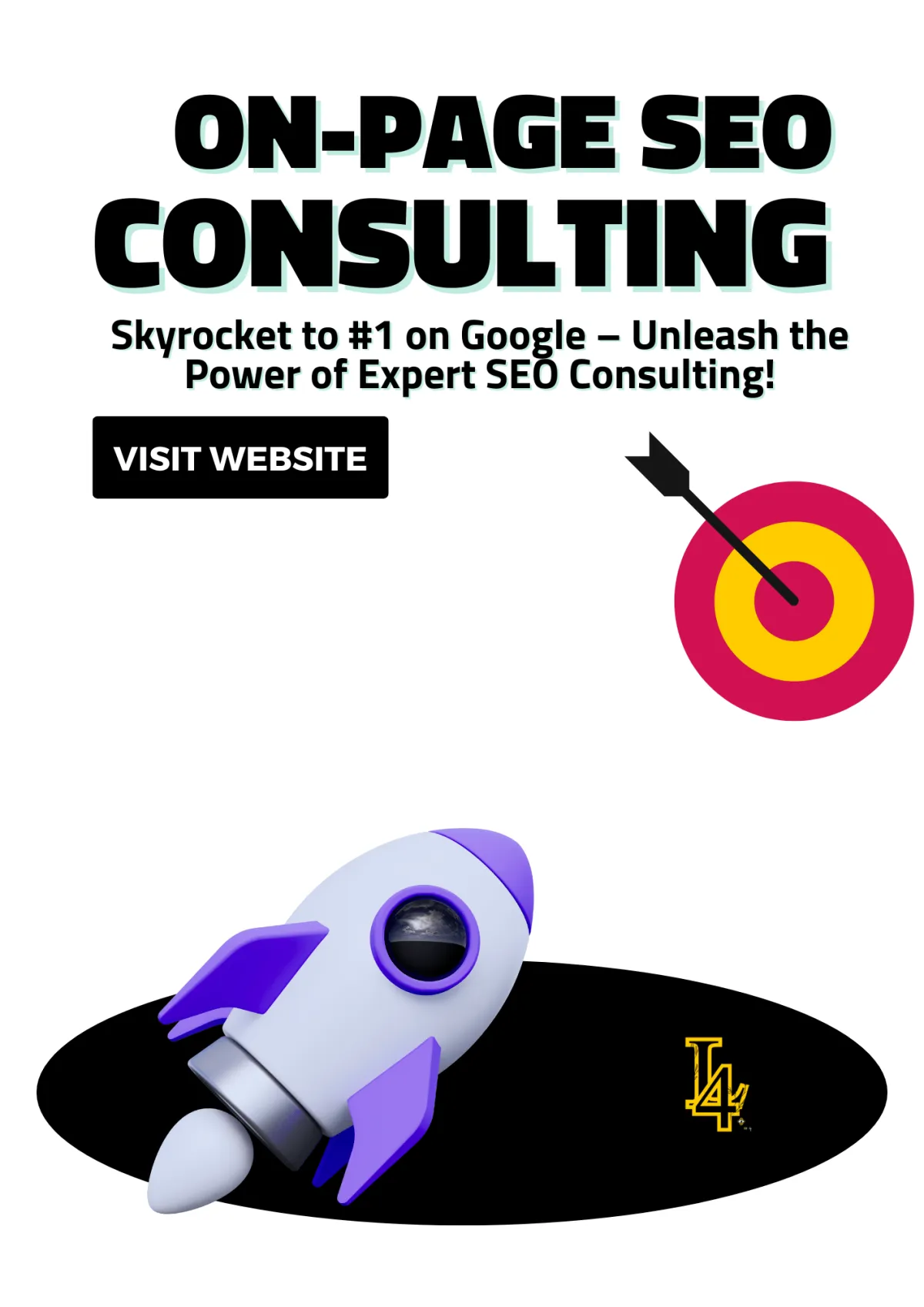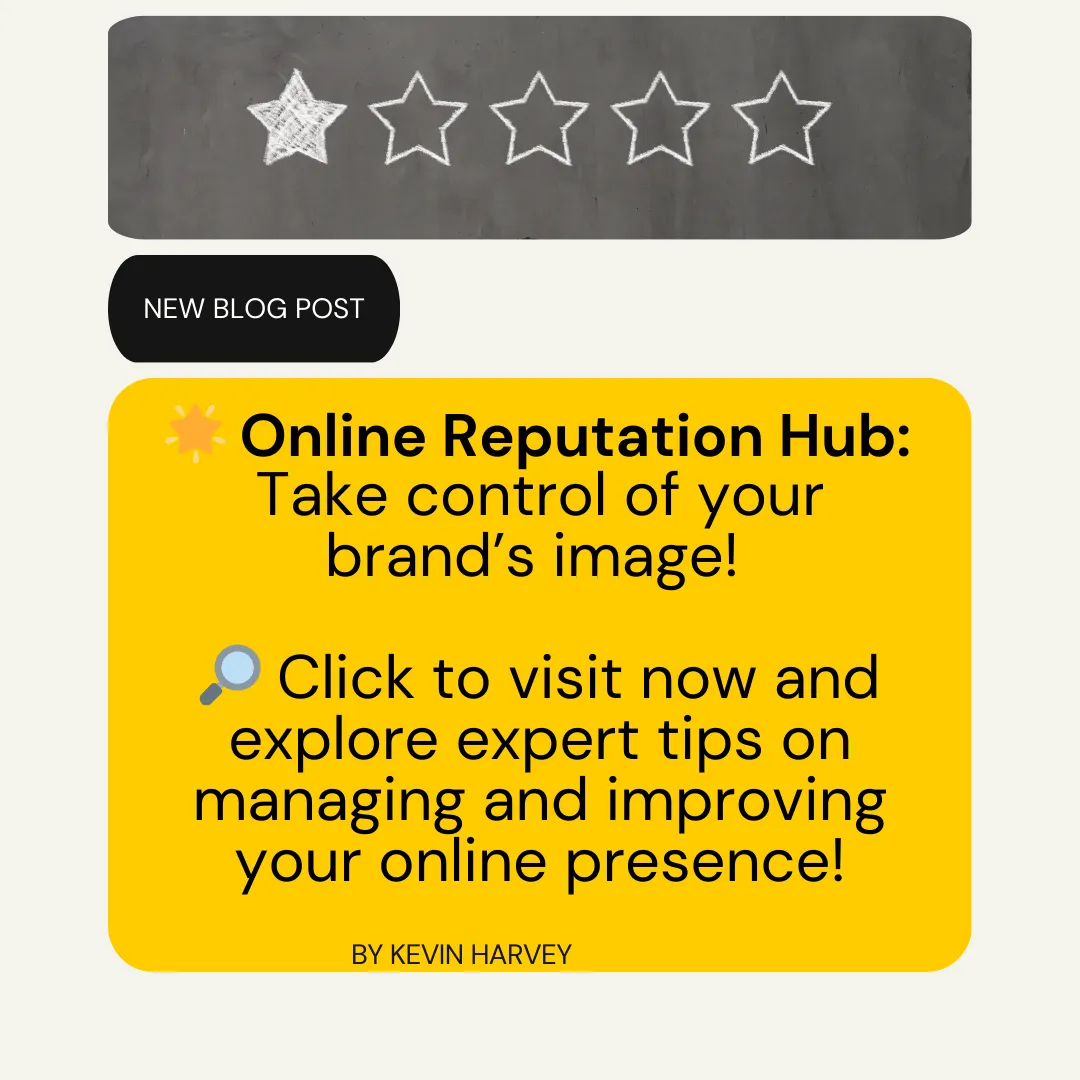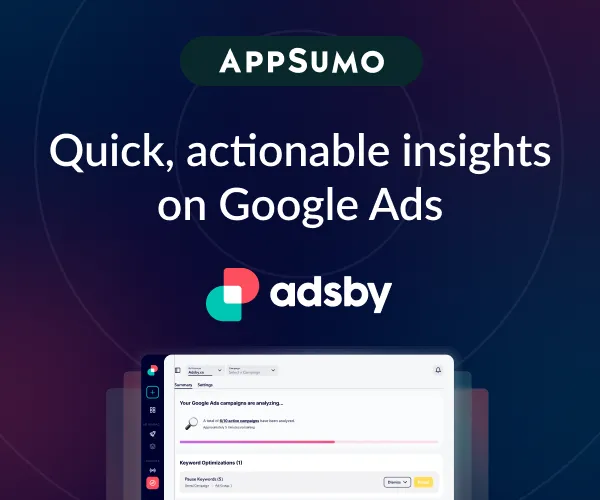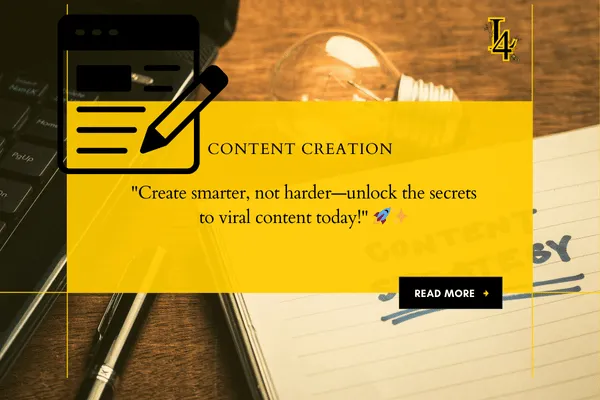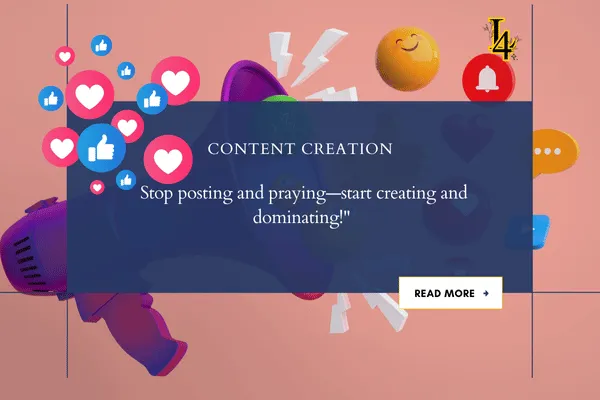
Start Your Own Personal Blog: A Beginner's Guide

Do personal blogs still matter in 2025? With the rise of social media and video content, it’s easy to think blogging has lost its spark. But the truth is, personal blogs offer something timeless—authenticity, depth, and a unique platform to share your story. Let’s explore why personal blogging continues to thrive in the ever-changing digital landscape.
Recommended Articles
Unlock Business Growth with Powerful Search Engine Services
Travel SEO Consultant: Helping Your Travel Business Take Off
Master SEO with Topic Clusters: The Ultimate Guide to Boost Rankings
Start Your Own Personal Blog: A Beginner's Guide
Why Personal Blogging Still Matters in 2025
1. A Space to Share Your Authentic Voice
2. Building Deeper Connections with Your Audience
3. A Platform for Long-Form Content
4. Monetization Opportunities Are Growing
5. Timeless Personal Blog Examples Continue to Inspire
6. How Personal Blogging Makes You a Better Writer
7. A Digital Legacy That’s Yours Forever
Overcoming the Feeling of Being Stuck
Strategies Used by Famous Writers and Creators
2. Elizabeth Gilbert: Write Anything
3. Jerry Seinfeld: Commit to Consistency
4. Shonda Rhimes: The Power of Play
5. Mark Twain: Change the Environment
Practical Tips to Overcome Writer’s Block
The Emotional Side of Writer’s Block
How to Recover Lost Blog Traffic After an SEO Update
1. Identify the Cause of the Drop
2. Refresh and Optimize Existing Content
4. Create New, Targeted Content
5. Strengthen Your Backlink Strategy
7. Monitor and Adjust Regularly
A Monthly Routine for Growing and Maintaining Your Personal Blog
Week 1: Planning and Brainstorming
Week 3: Promotion and Engagement
Ongoing Tasks Throughout the Month
SEO Basics Every Personal Blogger Should Know
1. Start with Keyword Research
2. Write High-Quality, User-Centric Content
3. Optimize Titles and Meta Descriptions
4. Use Internal and External Links
5. Optimize Images and Multimedia
6. Ensure Your Blog Is Mobile-Friendly
8. Leverage Social Media for SEO
10. Stay Updated on SEO Trends
The Rise of Video Blogging: Should You Add Vlogs to Your Personal Blog?
The Benefits of Adding Vlogs to Your Personal Blog
Challenges of Vlogging for Personal Bloggers
How to Get Started with Vlogging
Why Personal Blogging Still Matters in 2025
When I first started my personal blog, I wasn’t sure if it would matter in a world dominated by social media and influencers. Blogs seemed

like they were fading into the background, replaced by quick videos and bite-sized content. But as I’ve continued my blogging journey, I’ve realized that personal blogs still hold a special, irreplaceable place in the digital world. In 2025, personal blogging isn’t just alive—it’s thriving. Here’s why.
1. A Space to Share Your Authentic Voice
One of the best things about starting a personal blog is that it’s yours. Unlike social media platforms where algorithms decide what gets seen, a personal blog gives you complete creative control. Whether you’re sharing your favorite recipes, life lessons, or travel adventures, your blog is a space to express yourself without limitations.

For me, writing about personal blog ideas that genuinely reflect my
passions—like journaling tips or book reviews—has been deeply rewarding. It’s also taught me how to write a personal blog that connects with readers on a personal level.
2. Building Deeper Connections with Your Audience
While platforms like Instagram or TikTok are great for quick interactions, personal blogs allow you to dive deeper. When you write about meaningful topics or share your unique experiences, you create a connection that goes beyond likes and comments.
For example, one of my personal blog topics about mental health struck a chord with readers. They emailed me to share their own stories and struggles, which reminded me of how powerful a blog can be in building genuine relationships.

3. A Platform for Long-Form Content
Social media favors short, snappy posts, but a personal blog is where you can really let your ideas shine. If you have expertise to
share or a story to tell, a blog lets you dig deep.
I’ve written in-depth posts about how to write a personal blog and shared detailed personal blog examples to help new bloggers get started. These longer pieces are far more impactful than the fleeting content on social media—and they have a longer shelf life too.
4. Monetization Opportunities Are Growing
Let’s be honest: blogging isn’t just a passion project anymore. Many people, including myself, have turned their personal blogs into side hustles—or even full-time businesses. With the rise of affiliate

marketing, sponsored posts, and subscription models, the opportunities to monetize your blog have never been better.
If you’re starting a personal blog in 2025, know that you can make it profitable while staying true to your voice. One of the most helpful personal blog ideas I’ve used is to write about topics that align with brands or services I love, making collaborations feel authentic.
5. Timeless Personal Blog Examples Continue to Inspire
From lifestyle blogs to niche personal stories, I’ve come across countless blogs that inspire me. Reading others’ blogs helps me come up with fresh personal blog topics while learning from their

unique perspectives.
For instance, one of my favorite personal blog examples is a travel blog where the author documents their adventures while offering tips for solo travelers. It inspired me to start writing about my own experiences in a similar way, and readers loved the blend of storytelling and practical advice.

6. How Personal Blogging Makes You a Better Writer
I can’t tell you how much blogging has improved my writing skills. When you write regularly for a personal blog, you learn to communicate more effectively, organize your thoughts, and even experiment with different tones and styles.
If you’re wondering how to write a personal blog that captures attention, my advice is to practice often and focus on topics you’re passionate about. The more you write, the more your unique voice will shine through.

7. A Digital Legacy That’s Yours Forever
One of the most underrated aspects of personal blogging is that it creates a digital legacy. Social media posts come and go, but a blog is a lasting record of your ideas, experiences, and creativity.
Years from now, I love the idea of looking back at my blog and seeing how much I’ve grown. Starting a personal blog has been one of the most fulfilling decisions I’ve made, and knowing it’s there for me to reflect on makes it even more special.

Overcoming the Feeling of Being Stuck
When you’re a personal blogger, writer’s block often feels like staring at a blank screen with a head full of empty ideas. You might cycle through frustration, self-doubt, and even a sense of failure, wondering why you can’t just come up with something. I’ve been there—unable to decide on personal blog topics or even how to write a personal blog entry that feels authentic. The pressure to deliver value while staying true to your voice can make the creative block even worse.
But here’s the thing: even the most prolific writers and content creators struggle with this. What separates them is how they respond. Let’s look at how some well-known writers and creators tackle writer’s block.

Strategies Used by Famous Writers and Creators
1. Neil Gaiman: Walk It Out
Neil Gaiman, the celebrated author, often turns to long walks to clear his mind. Walking, he says, allows his thoughts to untangle naturally. When you’re stuck on personal blog ideas, try leaving your desk and taking a stroll. This simple act can break the loop of frustration and make space for fresh ideas.
2. Elizabeth Gilbert: Write Anything
Elizabeth Gilbert, author of Eat, Pray, Love, believes in writing through the block. Even if the words feel unpolished, she emphasizes putting something—anything—on paper. This aligns with Maya Angelou’s strategy: the key is not stopping. If you’re unsure how to write a personal blog post, start with stream-of-consciousness writing. A great idea may emerge from the act itself.
3. Jerry Seinfeld: Commit to Consistency
Jerry Seinfeld famously uses a productivity method called “Don’t Break the Chain.” He commits to writing jokes every day, no matter what. By building a habit of consistency, he eliminates the decision-making process that can contribute to creative paralysis. For personal bloggers, this could mean setting aside a few minutes daily to brainstorm or draft without the pressure of perfection.

4. Shonda Rhimes: The Power of Play
Shonda Rhimes, the mastermind behind Grey’s Anatomy and Scandal, swears by the transformative power of play. In her book Year of Yes, she explains how stepping away from work to engage in something playful—like dancing or playing with her kids—helps reignite her creative energy. If you’re stuck, try a fun, unrelated activity to refresh your mind.
5. Mark Twain: Change the Environment
Mark Twain often shifted to a different setting when he couldn’t write. He’d sit in a different room, outdoors, or even onboard a boat to spark creativity. If your usual workspace feels stifling, try writing your personal blog in a new environment—like a coffee shop, park, or even a different room in your house.
Practical Tips to Overcome Writer’s Block
If you’re feeling stuck, here’s a list of actionable steps to help you escape the rut:
Brainstorm with a Timer: Set a timer for 10 minutes and write down as many personal blog ideas as possible without judgment. Let the ideas flow freely, no matter how basic they seem.
Revisit Old Blog Posts: Sometimes, looking back at your personal blog examples can spark new inspiration. Consider expanding on an old topic or approaching it from a fresh angle.
Consume Content You Love: Watch a movie, listen to a podcast, or read a book. Engaging with content you enjoy can trigger ideas for new personal blog topics.
Talk to Your Audience: If you have readers, ask them what they’d like to see. This can provide a fresh perspective and motivation to write.
Create a Mind Map: Start with a central idea and branch out with related subtopics. For example, if you’re writing about "Starting a personal blog," related branches could include choosing a platform, writing your first post, and branding.

The Emotional Side of Writer’s Block
It’s important to acknowledge how writer’s block feels. It’s not just about struggling with ideas—it can make you question your abilities. But remember, this is a normal part of the creative process. Even the best creators hit walls, but they also know walls aren’t permanent.
Every personal blog has a unique voice and purpose. Yours is no exception. Writer’s block isn’t a sign that you’ve run out of creativity—it’s often just your brain asking for a reset. Step back, try some of the strategies above, and trust that the words will come.
As Neil Gaiman once said, "You can fix anything but a blank page." So, start small, write something imperfect, and keep going. The personal blog you’re building is worth it.
How to Recover Lost Blog Traffic After an SEO Update
If you’re running a personal blog, you may have experienced the panic of logging into your analytics dashboard and noticing a sudden drop in traffic after an SEO update. It’s frustrating—especially when your personal blog is your creative outlet or a source of income. But don’t worry; this doesn’t mean the end of your blog’s success. With the right strategies, you can recover lost traffic and future-proof your personal blog against similar setbacks.
Here’s how you can get back on track after an SEO update and keep your personal blog thriving.

1. Identify the Cause of the Drop
The first step in recovering lost traffic is figuring out what caused the decline. While it’s easy to blame an SEO update, other factors might also be at play. But if your personal blog has been hit by a Google algorithm change, it’s crucial to determine what specifically was affected.
What to Do:
Check for Recent Updates: Visit GoogleSearchCentralBlog to see if there were any algorithm changes that may have impacted your personal blog.
Analyze Affected Content: Use Google Analytics or Google Search Console to identify which pages or posts on your personal blog lost traffic. Focus on pages with high-ranking keywords or significant traffic drops.
Evaluate Keyword Performance: Analyze the keywords that were driving traffic to your personal blog. If rankings have dropped, check whether search intent or competition has changed.
Example:
After Google’s 2022 "Helpful Content Update," many personal blogs lost rankings due to thin or overly generic content. If your posts lack depth, personalization, or value, this may have affected your blog.

2. Refresh and Optimize Existing Content
If some posts on your personal blog aren’t performing as well as they used to, it might be time for a refresh. SEO updates often reward fresh, valuable, and relevant content.
What to Do:
Update Old Posts: Add current statistics, examples, or trends to make older posts on your personal blog more relevant. For example, if you’ve written about "How to Start a Personal Blog," include updated platform recommendations or new tools.
Optimize for Search Intent: Use SEO tools like SEMrush to identify the search intent behind your keywords. Adjust your content to match what readers are looking for when they visit your personal blog.
Improve Content Quality: Add visuals, infographics, or videos to make your posts more engaging. Well-designed and structured content will keep readers on your personal blog longer.
Example:
If a post about "Personal Blog Ideas" is losing traffic, expand it with more niche-specific ideas, such as ideas for travel blogs, fitness blogs, or parenting blogs.
3. Fix Technical Issues
Traffic drops on your personal blog might not just be about the content—it could also be due to technical problems that impact how search engines crawl and index your site.
What to Do:

Audit Site Speed: Slow load times can negatively impact your personal blog’s rankings. Use Google PageSpeed Insights to improve performance.
Fix Mobile Usability: If your personal blog isn’t mobile-friendly, it could be penalized in search rankings. Check this with Google’s Mobile-Friendly Test.
Repair Broken Links: Broken links on your personal blog can harm user experience and SEO. Use a tool like Screaming Frog to identify and fix them.
4. Create New, Targeted Content
While updating old posts is important, don’t forget to create fresh, high-quality content that aligns with the latest SEO guidelines. New content can quickly boost your personal blog’s traffic if done correctly.
What to Do:
Write for Current Trends: Use Google Trends to discover what people are searching for and create content that fits. For example, write a post about "How to Monetize a Personal Blog in 2025."

Focus on Long-Tail Keywords: These are specific phrases that drive targeted traffic to your personal blog. For instance, instead of just writing about "Personal Blog Topics," consider targeting "Creative Personal Blog Topics for Beginners."
Publish Consistently: Posting regularly can help your personal blog regain momentum. Aim for a schedule that works for you, whether weekly or biweekly.
5. Strengthen Your Backlink Strategy
High-quality backlinks can help rebuild the authority of your personal blog, which is often impacted by algorithm updates.
What to Do:
Pitch Guest Posts: Collaborate with other bloggers in your niche to create guest posts that link back to your personal blog.
Shareable Content: Write posts that naturally encourage others to link to your personal blog, such as in-depth guides, infographics, or thought-provoking opinion pieces.
Monitor Backlinks: Use tools like Moz or Ahrefs to disavow spammy backlinks that could harm your personal blog’s rankings.

6. Engage Your Audience
SEO traffic isn’t the only way to grow a personal blog. Engaging with your existing audience can keep traffic steady while you work on improving SEO.
What to Do:
Leverage Social Media: Share updated blog posts across your social platforms to drive traffic back to your personal blog.
Send Newsletters: Use email marketing to inform subscribers about new content or updates on your personal blog.
Interact with Readers: Reply to comments on your personal blog and social media to foster a loyal audience.
7. Monitor and Adjust Regularly
SEO is not a "set it and forget it" process. To maintain growth on your personal blog, you’ll need to monitor your progress and make adjustments as needed.
What to Do:
Set Benchmarks: Regularly track your personal blog’s traffic, rankings, and engagement metrics.
Test and Learn: Experiment with different strategies, such as changing your headline style or adding video content to your personal blog.
Stay Informed: Keep up with the latest SEO trends and guidelines to stay ahead of potential traffic drops.

A Monthly Routine for Growing and Maintaining Your Personal Blog
Creating a monthly routine can help you stay organized, produce high-quality content, and ensure your personal blog continues to attract readers. Below is a simple yet effective monthly routine to keep your blog on track and growing.
Week 1: Planning and Brainstorming
Tasks to Complete:

Brainstorm Blog Topics:
Use tools like Google Trends, AnswerThePublic, or even a notebook to jot down ideas. Focus on trending topics and evergreen content that aligns with your niche.Example: "Creative Personal Blog Topics to Try in 2025."
Analyze Your Blog’s Analytics:
Review your blog’s performance from the previous month. Identify which posts performed well and determine why. Use Google Analytics or similar tools to track page views, bounce rates, and user behavior.Set Goals:
Establish clear, measurable goals for the month, such as increasing traffic by 10%, posting four new articles, or boosting email subscribers by 20%.Create an Editorial Calendar:
Plan out your posts for the month. Assign topics to specific dates to ensure consistency.
Week 2: Content Creation
Tasks to Complete:
Write and Edit Blog Posts:
Dedicate time to crafting high-quality articles. Make sure each post is engaging, informative, and optimized for SEO. Include internal links to other posts on your personal blog to encourage readers to stay longer.Create Visuals:
Design images, infographics, or videos to accompany your posts. Tools like Canva are great for creating professional-looking visuals.Draft Social Media Content:
Write captions and create graphics to promote your blog posts across your social media platforms.Proofread and Schedule:
Proofread your posts for grammar and clarity, and schedule them to publish on the planned dates.
Week 3: Promotion and Engagement
Tasks to Complete:
Promote on Social Media:
Share your blog posts on Instagram, Facebook, Twitter, or LinkedIn. Experiment with different types of content, like carousels, videos, or stories, to drive traffic back to your personal blog.Email Your Subscribers:
Send a monthly newsletter with highlights from your blog, personal updates, or exclusive content.Engage with Readers:
Reply to comments on your blog and social media posts. Building relationships with your audience fosters loyalty and increases engagement.Reach Out for Collaborations:
Partner with other bloggers in your niche for guest posts, interviews, or social media takeovers. These collaborations can introduce your personal blog to a new audience.
Week 4: Review and Optimize
Tasks to Complete:
Check Analytics Again:
Analyze how your blog performed during the first three weeks of the month. Identify which posts or strategies were most successful.
Update Old Content:
Revise older posts on your personal blog with updated information, fresh visuals, or better SEO optimization. This helps keep your content relevant and improves its rankings.Backlink Outreach:
Reach out to other bloggers or websites for backlink opportunities. High-quality backlinks boost your blog’s authority and improve search rankings.Plan for the Next Month:
Reflect on the month’s successes and challenges. Use these insights to refine your strategy for the upcoming month.
Ongoing Tasks Throughout the Month
Stay Active on Social Media:
Post consistently, interact with followers, and participate in relevant communities or hashtags to maintain visibility.Monitor SEO Trends:
Stay updated on algorithm changes or new techniques to ensure your personal blog remains optimized.Network with Other Bloggers:
Join blogging communities or forums to exchange ideas, gain inspiration, and stay motivated.
Example of a Monthly Goal:
If your goal is to grow your personal blog’s traffic by 20%, you could:
Publish four well-optimized blog posts targeting high-traffic keywords.
Share each post across social media platforms twice per week.
Engage with other bloggers to generate backlinks and referral traffic.
A consistent monthly routine can turn your personal blog into a well-oiled machine. By focusing on planning, content creation, promotion, and optimization, you can achieve steady growth and maintain your blog’s momentum. With dedication and the right strategies, your personal blog will continue to thrive and attract new readers month after month.

SEO Basics Every Personal Blogger Should Know
If you’re running a personal blog, you’ve probably heard about the importance of SEO (Search Engine Optimization). But what does it actually mean, and how can it help your blog? SEO is the process of optimizing your blog so that it ranks higher on search engine results pages (SERPs), making it easier for people to find your content. Whether you’re a beginner or looking to brush up on the basics, mastering SEO is essential to grow your audience and improve your blog’s visibility.
Here are the SEO fundamentals every personal blogger needs to know.
1. Start with Keyword Research
Keyword research is the foundation of SEO. Keywords are the phrases or terms people type into search engines to find content. For personal bloggers, identifying the right keywords ensures your posts align with what your audience is searching for.
How to Do It:
Use tools like Google Keyword Planner, Ubersuggest, or Ahrefs to discover relevant keywords in your niche.
Focus on long-tail keywords, which are specific phrases with lower competition, such as "how to start a personal blog for beginners" instead of "personal blog."
Include keywords naturally in your content, especially in titles, headings, and meta descriptions.
Example:
If your personal blog focuses on lifestyle, you might target keywords like "morning routine for productivity" or "budget-friendly home decor tips."

2. Write High-Quality, User-Centric Content
Search engines prioritize content that provides real value to readers. Creating engaging, informative, and original blog posts not only helps your audience but also improves your blog’s SEO.
Key Tips:
Write with your readers in mind, not just for search engines.
Answer common questions and solve problems your audience faces.
Use clear formatting: break up text with headings, bullet points, and images to improve readability.
Example:
For a post about "personal blog topics," include practical examples, creative ideas, and a step-by-step guide to inspire your readers.
3. Optimize Titles and Meta Descriptions
Your blog post’s title and meta description are often the first things users see on a search engine. These elements should grab attention and include your target keywords.
How to Optimize:
Title Tags: Keep them under 60 characters and include your primary keyword (e.g., "10 Personal Blog Ideas to Inspire Your Next Post").
Meta Descriptions: Summarize your post in 155–160 characters, making it engaging and keyword-rich.
Why It Matters:
An optimized title and meta description improve your click-through rate (CTR), which signals to search engines that your content is valuable.
4. Use Internal and External Links
Linking is a powerful SEO tactic that can boost your personal blog’s rankings.
Internal Links:
Link to other relevant posts on your blog to keep readers engaged and improve site navigation.
Example: If you’re writing about "how to write a personal blog," link to another post about "personal blog examples."
External Links:
Link to credible sources or data that support your content. This builds trust with readers and search engines.
Example: If you’re sharing statistics, link to authoritative sites like Google or research publications.

5. Optimize Images and Multimedia
Images and videos make your blog visually appealing, but they can also slow down your site if not optimized.
How to Optimize:
Use compressed image formats (e.g., JPEG or PNG) to improve loading speed.
Add alt text to every image. Alt text describes the image for search engines and visually impaired readers, helping your content rank better.
Use descriptive filenames, such as "personal-blog-topics.jpg" instead of "IMG12345.jpg."
6. Ensure Your Blog Is Mobile-Friendly
With mobile devices accounting for over 60% of internet traffic, having a mobile-friendly blog is essential for SEO.
What to Check:
Use Google’s Mobile-Friendly Test to see how your blog performs on smaller screens.
Choose a responsive design or theme that adapts to different devices.
Avoid pop-ups that disrupt the user experience on mobile.
7. Focus on Page Speed
Page speed is a critical ranking factor. A slow-loading personal blog can frustrate users and hurt your SEO.

How to Improve:
Use caching plugins like WP Super Cache if you’re on WordPress.
Compress images and limit the number of large files on your site.
Upgrade your hosting provider if your blog consistently loads slowly.
8. Leverage Social Media for SEO
Social media doesn’t directly impact SEO rankings, but it can drive traffic to your blog and improve engagement.
How to Use It:
Share your blog posts on platforms like Instagram, Pinterest, and Twitter.
Encourage readers to share your content. Social shares increase your reach and can result in more backlinks.

9. Track Your SEO Performance
To know what’s working (and what isn’t), regularly monitor your blog’s performance.
Tools to Use:
Google Analytics: Track traffic, bounce rates, and user behavior.
Google Search Console: Identify which keywords are driving traffic and check for technical issues.
Yoast SEO or Rank Math: If you’re using WordPress, these plugins can guide you in optimizing your content.
10. Stay Updated on SEO Trends
SEO is constantly evolving, and staying informed can help you adapt to changes. Follow blogs like Moz and SearchEngineJournal to learn about new updates and best practices.
SEO may seem overwhelming at first, but once you master the basics, it becomes an integral part of growing your personal blog. Start with small steps like keyword research, writing user-focused content, and optimizing your site’s technical aspects. Over time, these efforts will pay off in higher rankings, more traffic, and a thriving blog.
Remember, SEO isn’t just about algorithms—it’s about creating a personal blog that’s valuable and accessible to your audience. Stick with these fundamentals, and your blog will continue to grow and reach new readers.

The Rise of Video Blogging: Should You Add Vlogs to Your Personal Blog?
In recent years, video blogging, or vlogging, has surged in popularity, transforming the way bloggers engage with their audience. As platforms like YouTube, TikTok, and Instagram continue to dominate the digital landscape, it’s no surprise that personal bloggers are considering adding vlogs to their content strategy. But is vlogging the right move for your personal blog?
Let’s explore the rise of vlogging, its benefits and challenges, and whether it’s a good fit for your personal blogging journey.
Why Vlogging Is Taking Over
Increased Engagement
Video content is naturally more engaging than text. People are more likely to watch a short video than read a long blog post, especially when they’re on the go. Platforms like YouTube and Instagram report higher user engagement for video content compared to other formats.Visual Storytelling
Vlogging allows bloggers to show instead of tell. Whether you’re sharing a day in your life, a tutorial, or a personal story, video can capture emotions, experiences, and details that text or photos can’t fully convey.Adaptation to Audience Preferences
According to a 2023 report by Wyzowl, 91% of consumers prefer video content from brands or creators. This shift in audience preference has encouraged more bloggers to embrace video as part of their strategy.SEO Benefits
Search engines prioritize video content in search results, especially if it’s uploaded to YouTube (owned by Google) or embedded in a blog. Adding vlogs to your personal blog can improve its visibility and attract more organic traffic.
The Benefits of Adding Vlogs to Your Personal Blog
Build a Stronger Connection
Vlogs help you connect with your audience on a personal level. Seeing your face, hearing your voice, and experiencing your personality builds trust and fosters a deeper relationship with your readers.
Reach New Audiences
Platforms like YouTube and TikTok have billions of active users. By incorporating vlogs into your personal blog, you can tap into these audiences and introduce them to your written content.Diversify Your Content
Adding vlogs allows you to cater to different types of learners. Some people prefer reading, while others are more visual or auditory learners. Offering both formats ensures that your personal blog appeals to a broader audience.Showcase Your Expertise
Tutorials, demonstrations, or “how-to” videos can showcase your expertise in ways that text alone can’t. For example, if your personal blog covers DIY projects, a video walkthrough can complement your written instructions.
Monetization Opportunities
Vlogs open up new monetization channels. From YouTube ad revenue to sponsored video content, you can diversify your income while growing your personal blog.
Challenges of Vlogging for Personal Bloggers
Time and Effort
Creating high-quality video content takes time. You’ll need to plan, shoot, edit, and publish each vlog, which can be more time-consuming than writing a blog post.Equipment Costs
While you don’t need a Hollywood studio, investing in a good camera, microphone, and editing software can be costly, especially if you’re just starting out.On-Camera Confidence
Being comfortable in front of the camera doesn’t come naturally to everyone. It may take time to build the confidence to vlog authentically.Consistency is Key
Like blogging, vlogging requires consistency. To maintain audience interest, you’ll need to upload videos regularly, which can be challenging if you’re managing other commitments.Platform Competition
The video blogging space is highly competitive. Standing out on platforms like YouTube or TikTok requires unique, high-quality content and a solid promotional strategy.
How to Get Started with Vlogging
If you decide to add vlogs to your personal blog, here are a few tips to help you get started:

Start Simple
You don’t need expensive equipment to begin. A smartphone with a decent camera, good lighting, and basic editing software is enough to create engaging videos.Repurpose Existing Content
Turn your most popular blog posts into videos. For example, if you wrote a guide on "Personal Blog Ideas," create a vlog version with visuals and additional insights.Plan Your Content
Just like blogging, vlogging requires planning. Outline your video topics, scripts, and shooting schedule to stay organized.Promote Across Platforms
Share your vlogs on social media, embed them in blog posts, and cross-promote them on other platforms to maximize visibility.Engage With Your Audience
Respond to comments and feedback on your videos. Building a community around your vlog can drive traffic back to your personal blog.
Is Vlogging Right for Your Personal Blog?
Deciding whether to add vlogs to your personal blog depends on your goals, skills, and resources. If you enjoy being on camera, have a knack for storytelling, and want to expand your reach, vlogging can be a powerful addition to your blog. However, if you’re short on time or prefer writing, you can still grow your personal blog without video content.

The rise of video blogging reflects a shift in how people consume content, and it’s an opportunity that personal bloggers shouldn’t ignore. While vlogging comes with its challenges, the potential for increased engagement, broader reach, and new monetization options makes it a valuable addition to your personal blog.
Start small, experiment with different formats, and find a balance that works for you. Whether you stick to traditional blogging or embrace vlogging as well, the most important thing is staying true to your voice and connecting with your audience authentically.
Conclusion:
"So, does personal blogging still matter in 2025? Absolutely. In a world of fleeting trends and viral posts, blogs remain a space for meaningful connections, creativity, and a lasting digital presence. Whether you’re starting fresh or revitalizing an old blog, your voice matters. The question isn’t if personal blogging is relevant—the question is, are you ready to share your story with the world?"





